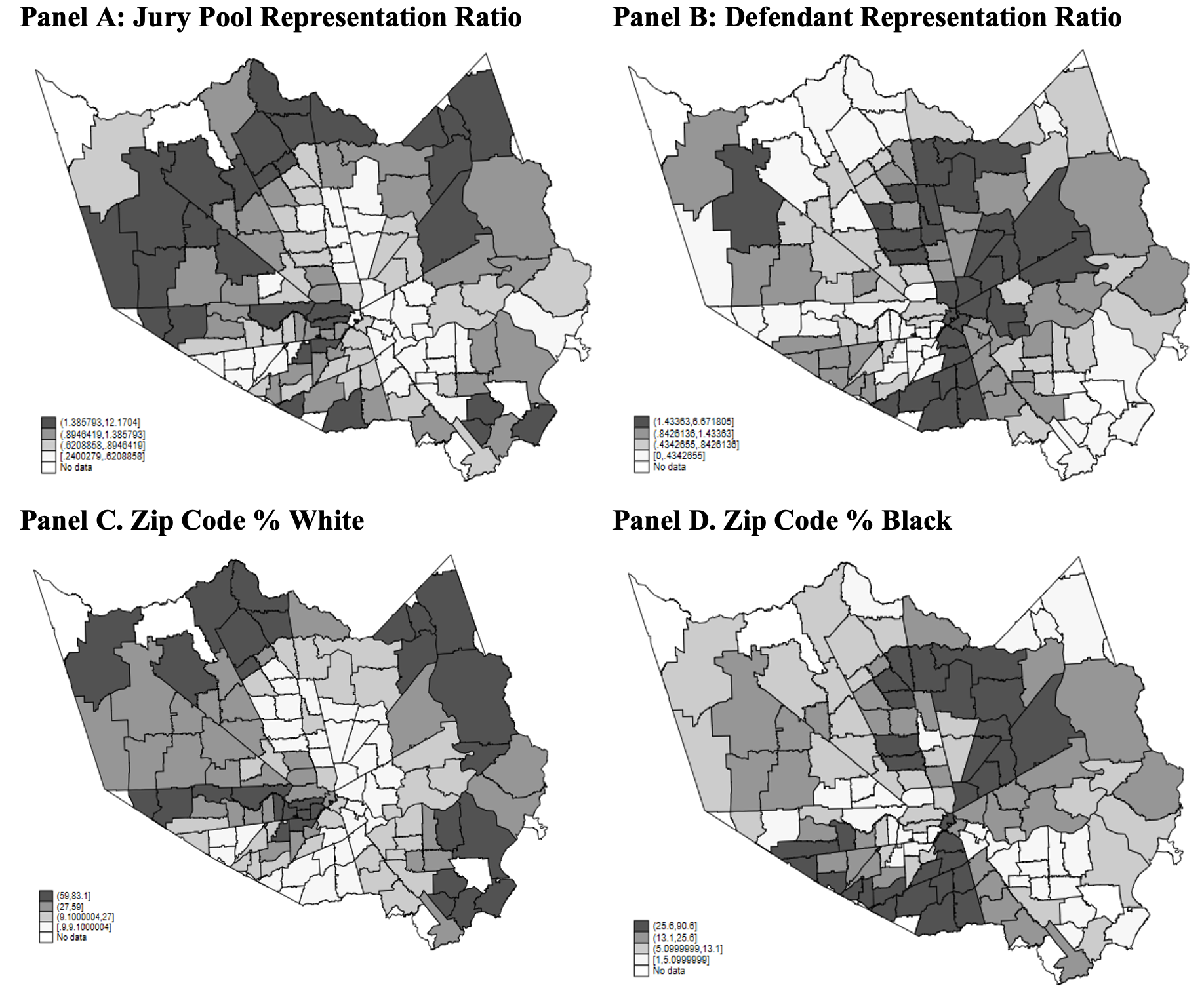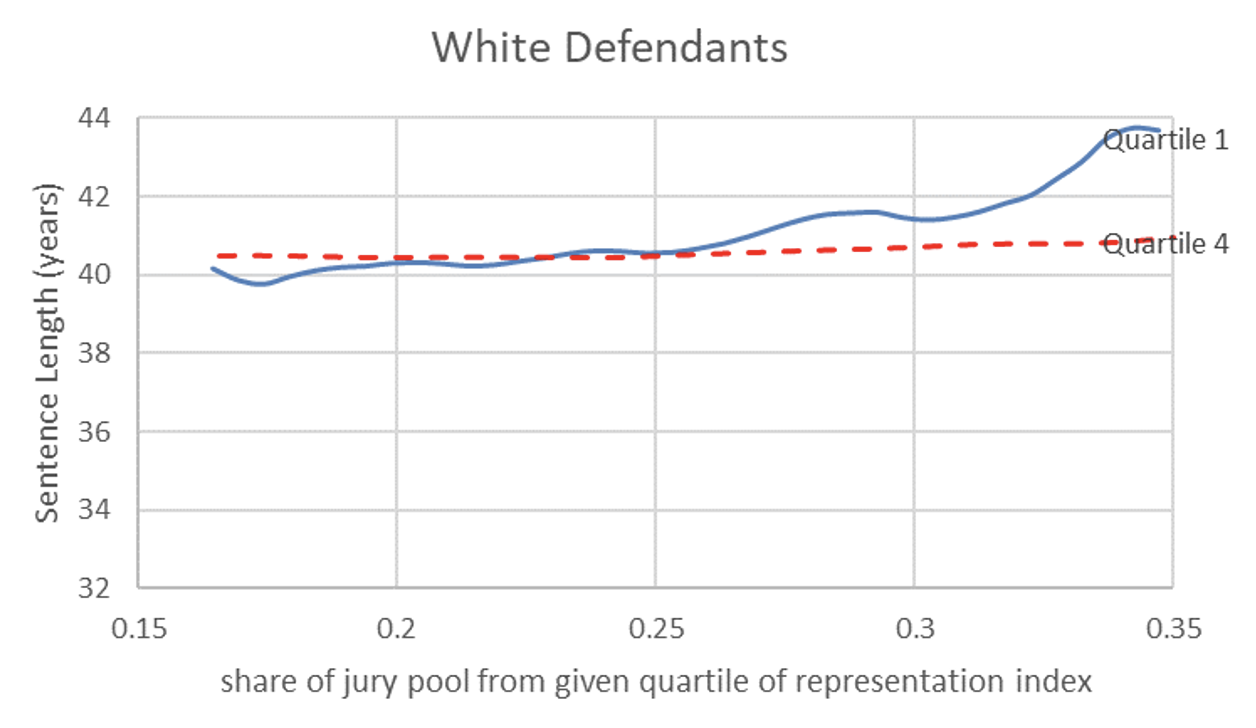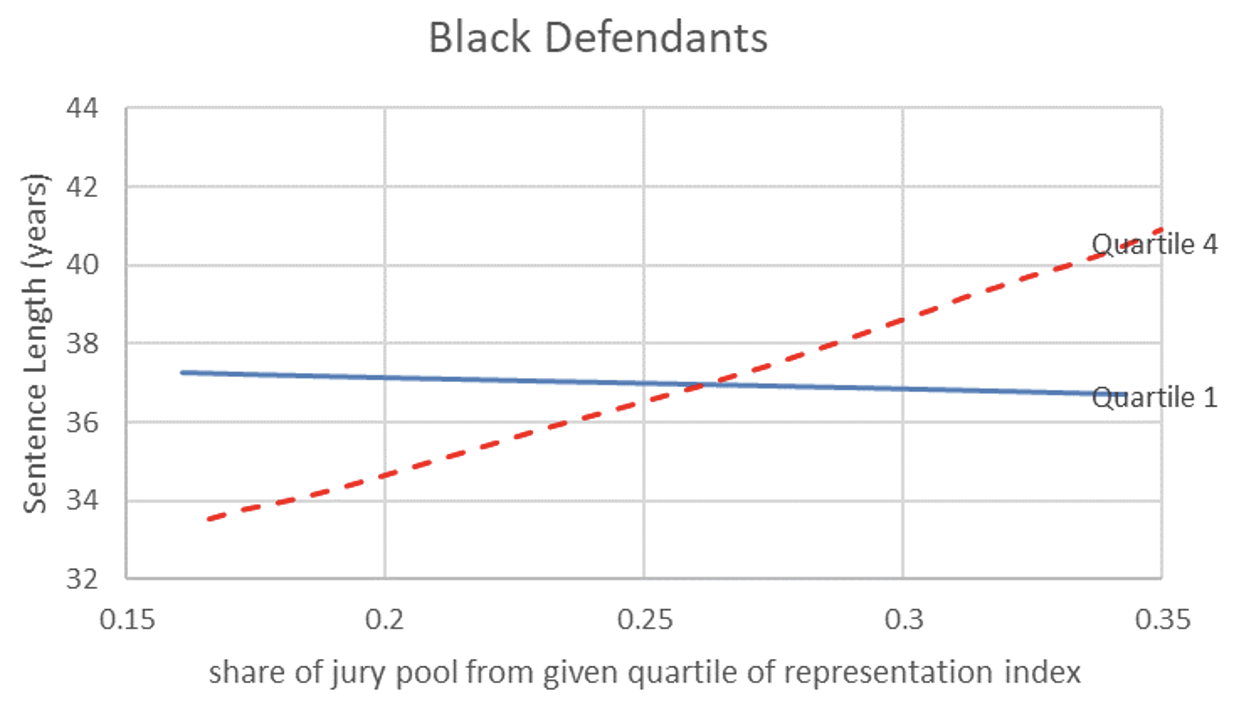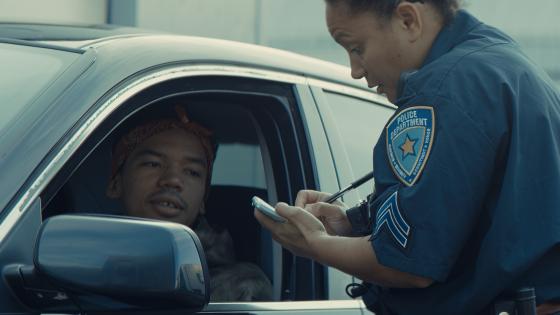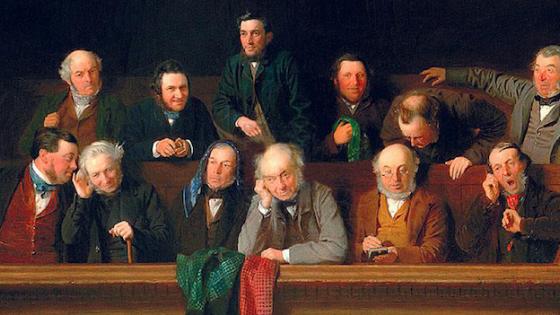There is growing concern and anecdotal and academic evidence that racial minorities in the US are overrepresented amongst criminal defendants and unequally treated throughout the criminal justice system, ranging from interactions with the police (Facchini et al. 2020) to death sentences (La Ferrara and Alesina 2011).
Moreover, this unequal representation is asymmetric, as minorities are underrepresented amongst the decision makers such as police, prosecutors, jurors, and judges. Though much of this concern is focused on race, this could be a symptom of a more general form of unequal community representation.
This begs the question: what are the consequences (and potential policy remedies) of unequal representation of neighbourhoods? This column discusses this question in the context of one agent in the justice system that is explicitly meant to be representative of the community – the jury.
What we know
Juries across the US are often highly unrepresentative of their communities – especially for the young, poor, transient, and racial minority populations. Researchers studying federal courts concluded that “some amount of underrepresentation in jury pools is the norm” (Rose et al. 2018). Legal scholars highlight that this underrepresentation is a result of a sequence of selection processes that determine who: (i) is eligible for jury service and included in a jurisdiction’s ‘master list’ (Hans and Vidmar 1986), (ii) responds to a jury summons (e.g. Cohen and Rosales 2007), and (iii) is seated during pre-trial jury selection (Baldus et al. 2001).
An almost completely disjointed body of research, conducted by criminologists, psychologists, and economists, studies the effects of specific jury characteristics (as opposed to community representation more generally) on trial outcomes. The earliest studies provide correlational evidence in the real world of a relationship between jury race and trial outcomes (e.g. Bowers et al. 2001) or causal evidence in laboratory mock-jury settings (e.g, Sommers 2008).
Using quasi-experimental research designs, which take into account the non-random nature of the seated jury, economists provided the first causal evidence that a jury’s race (Anwar et al. 2012), age (Anwar et al. 2014), gender (Anwar et al. 2019a), political affiliation (Anwar et al. 2019b) and experiences (Philippe and Ouss 2018) affect trial outcomes in the real world.
Unequal representation and its consequences in Harris County, Texas
Our recent paper (Anwar et al. 2021) brings together these literatures for the first time in a single study. We first analyse both the extent and nature of geographic representation in the jury pool and defendant populations of Harris County, Texas. We then assess the extent to which this unequal representation causally impacts verdicts and sentences. Finally, we simulate how conviction rates and sentence lengths would change if neighbourhoods were equally represented in jury pools.
Harris County includes the city of Houston and has a population of about 4.7 million. The process of choosing jurors begins with the master jury list, which consists of registered voters in the county or those who hold a Texas driver’s licence or identification card. Citizens on the list are randomly selected and mailed a summons to report for jury service on a given date.
Summoned individuals who do not meet eligibility requirements or have grounds for an exemption do not need to appear in court. Those who show up for jury duty are randomly assigned to a panel of roughly 65 individuals, which forms the jury pool for a particular trial.
Members of the jury pool then go through the voir dire process to determine who is seated on the 12-person jury. Potential jurors can be removed for cause if there is a known reason they cannot be impartial. Prosecutors and defence attorneys can also use peremptory challenges to strike potential jurors without providing a reason; though it is illegal for strikes to be based on race or gender, this is difficult to enforce in practice.
Thus, while the jury pool is randomly assigned to cases from the set of individuals who report for jury duty, the voir dire process implies the seated jury may be correlated with case and defendant characteristics.
For all felony trials (about 2,400) from June 2005 through March 2012, we obtained data on defendants (demographic, offence, verdict and sentencing characteristics) as well as jurors. The juror data contain about 300,000 potential jurors that were empanelled for a jury trial, including their zip code of residence.
We study the first question – descriptive analyses of representation – using these raw data sets. But analyses of the causal effects of representation on trial outcomes necessitates matching the defendant and jury data sets. Our matched data include 981 non-capital felony trials in which the jury makes both the conviction and sentencing decisions; the defendant is eligible for a life sentence (technically 99 years in prison) in 75% of these trials.
Geographic representation in the jury pool, seated jury and defendant populations
Our analysis begins by developing a measure of the extent to which individuals from various neighbourhoods are over- or underrepresented in two populations at the core of the criminal justice system: the jury pool that decides the outcome of cases and the defendants subject to these decisions.
Specifically, for each of the 129 Harris County zip codes, we calculate the ratio between the share of all individuals in the pooled sample of jury pools from that zip code and the share of the population (over age 16) in the census from that zip code. This ratio will be greater (less) than one for zip codes that are overrepresented (underrepresented) in the jury pool relative to the census. We follow the same procedure to create representation ratios for defendants.
Our analysis of jury and defendant representation reveals four key results.
- Many zip codes have jury pool representation ratios far from one. In fact, 25% of zip codes have ratios less than 0.61 and 25% have ratios greater than 1.39. Panel A of Figure 1 plots these ratios in a map of Harris County zip codes, revealing that the overrepresented zip codes (shaded darker) are in the outskirts or suburbs.
- The wide dispersion in jury representation ratios originates in the jury pool itself and not the process through which the seated jury is selected.
- Zip codes are also severely over- and underrepresented amongst the defendant population; however, Panel B of Figure 1 shows that the same zip codes that are underrepresented in the jury pool are overrepresented amongst defendants.
- The most represented zip codes in the jury pool also have the highest proportion of white residents, while those most represented amongst defendants have the highest fraction of Black residents (Figure 1, Panels C and D). On average, 25.0% and 12.6% of the population is Black in the under- and overrepresented zip codes, respectively. Underrepresented areas also tend to be of lower socioeconomic status generally, as measured by income, education, and unemployment.
Figure 1 Harris County maps of zip code race and representation in jury pools and defendant populations
Notes: Panels A and B present representation ratios for the jury pool and defendants in Harris County zip codes, while Panels C and D present the share white and Black according to the 2010 Census. In all figures, darker shading corresponds to higher values.
The effect of unequal representation on trial outcomes
Our research design to study the effect of jury representation on trial outcomes is motivated by the quasi-random way in which jury pools are assigned to trials. The individuals in the jury pool on a given day (from whom the jurors are chosen) are random and therefore unrelated to defendant and case characteristics. Thus, some trials are effectively randomly assigned to jury pools with many potential jurors from overrepresented zip codes, while others are assigned to pools with a relatively high percentage of jurors from underrepresented zip codes.
Figure 2 graphically examines the relationship between sentence length and the proportion of the jury pool from zip codes in the fourth (or first) quartile of the distribution of representation ratios among jury pool members.
For Black defendants, increasing the share of the jury pool from the fourth quartile of the representation index distribution (i.e. the zip codes that are the most overrepresented) results in substantial increases in sentence lengths. Regression results indicate that this relationship is strong, statistically significant and robust.
The panel for white defendants indicates their sentences are somewhat longer when a higher fraction of the jury pool comes from zip codes in the first quartile of the representation index distribution, although regressions show this impact is not statistically significant. This could be due to the small sample of white defendants.
Figure 2 The relationship between jury pool representation and trial outcomes
Notes: These figures plot the relationships using local polynomial regressions between sentence length and the shares of the jury pool from the first (solid blue line) and fourth (dashed red line) quartiles of the jury pool representation ratios separately for white and Black defendants. Jurors in the fourth quartile consist of the 25% of jury pool members from zip codes with the highest representation ratios.
What if there was equal representation?
Ideally, jury pools should reflect the local population, and thus a natural question to ask is: how would sentences change if residents from Harris County neighbourhoods were equally represented in jury pools? To answer this question, we simulate the average sentence length for defendants under equal jury representation.
The results for Black defendants are striking. If the jury pool were reflective of the county, the average sentence would fall by almost 15 years, and the median sentence length would essentially be cut in half, from 31.5 to 16 years. The likelihood Black defendants would be convicted of a life sentence would also fall by more than 50%.
Policy implications
A number of potential policy and legal remedies are available to mitigate the bias observed in the Harris County jury system. But the effectiveness of each measure will depend on the various sources of the unequal jury representation.
First, jurisdictions can expand the source list from which jury pools are solicited. Though registered voters or drivers’ licences are by far the most common mandated source lists across states, a number of states permit the courts to supplement the master list with additional sources (e.g. income and property tax rolls, unemployment compensation lists, and welfare lists) that may be more likely to include the underrepresented populations.
Second, jurisdictions can try to improve the response rate of individuals who are summoned. This can be done by more frequent updating of lists (so that the summons is more like to reach transient individuals) or via information campaigns on the importance of jury duty.
A final policy response is a direct implication of the analyses presented here. A straightforward way to ensure a balanced distribution of jurors across neighbourhoods would be to oversample residents from underrepresented neighbourhoods in calls for jury duty so that jury panels properly reflect the community. An attractive feature of this remedy is that it equalises representation across neighbourhoods regardless of the underlying reason for any systematic unequal representation.
References
Anwar, S, P Bayer and R Hjalmarsson (2012), “The impact of jury race in criminal trials”, Quarterly Journal of Economics 127: 1017–55.
Anwar, S, P Bayer and R Hjalmarsson (2014), “The role of age in jury selection and trial outcomes”, Journal of Law and Economics 57(4): 1001–30.
Anwar, S, P Bayer and R Hjalmarsson (2019a), “A jury of her peers: The impact of the first female jurors on criminal verdicts”, The Economic Journal 129: 603–50.
Anwar, S, P Bayer and R Hjalmarsson (2019b), “Politics in the courtroom: Political ideology and jury decision making”, Journal of the European Economic Association 17(3): 835–75.
Anwar, S, P Bayer and R Hjalmarsson (2021), “Unequal jury representation and its consequences”, CEPR Discussion Paper 15909.
Baldus, D C, G Woodworth, D Zuckerman, N A Weiner and B Broffitt (2001),” The use of peremptory challenges in capital murder trials: A legal and empirical analysis”, University of Pennsylvania Journal of Constitutional Law 3: 3–169.
Bowers, W J, B D Steiner and M Sandys (2001), “Death sentencing in black and white: An empirical analysis of jurors’ race and jury racial composition”, University of Pennsylvania Journal of Constitutional Law 3: 171–275.
Cohen, B, and J Rosales (2007), “Racial and ethnic disparity in Manhattan jury pools: Results of a Survey and suggestions for reform”, Citizen Action of New York.
Facchini, G, B Knight and C Testa (2020), “Policing and race: The role of electoral accountability”, VoxEU.org, 7 July.
Hans, V, and N Vidmar (1986), Judging the jury. Perseus Publishing.
La Ferrara, Eliana and Alberto Alesina (2011), “The death penalty and racial bias in the US“, VoxEU.org, 27 May.
Philippe, A, and A Ouss (2018), “‘No hatred or malice, fear or affection’: Media and sentencing”, Journal of Political Economy 126: 2134–78.
Rose, M, R Casarez and C Gutierrez (2018), “Jury pool underrepresentation in the modern era: Evidence from federal courts”, Journal of Empirical Legal Studies 15(2): 378–405.
Sommers, S (2008), “Determinants and consequences of jury racial diversity: Empirical findings, implications, and directions for future research”, Social Issues and Policy Review 2: 65–102.




